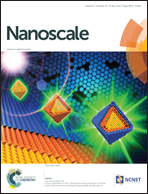Planar microcavity-integrated hot-electron photodetector
Abstract
Hot-electron photodetectors are attracting increasing interest due to their capability in below-bandgap photodetection without employing classic semiconductor junctions. Despite the high absorption in metallic nanostructures via plasmonic resonance, the fabrication of such devices is challenging and costly due to the use of high-dimensional sub-wavelength nanostructures. In this study, we propose a planar microcavity-integrated hot-electron photodetector (MC-HE PD), in which the TCO/semiconductor/metal (TCO: transparent conductive oxide) structure is sandwiched between two asymmetrically distributed Bragg reflectors (DBRs) and a lossless buffer layer. Finite-element simulations demonstrate that the resonant wavelength and the absorption efficiency of the device can be manipulated conveniently by tailoring the buffer layer thickness and the number of top DBR pairs. By benefitting from the largely increased electric field at the resonance frequency, the absorption in the metal can reach 92%, which is a 21-fold enhancement compared to the reference without a microcavity. Analytical probability-based electrical calculations further show that the unbiased responsivity can be up to 239 nA mW−1, which is more than an order of magnitude larger than that of the reference. Furthermore, the MC-HE PD not only exhibits a superior photoelectron conversion ability compared to the approach with corrugated metal, but also achieves the ability to tune the near infrared multiband by employing a thicker buffer layer.


 Please wait while we load your content...
Please wait while we load your content...